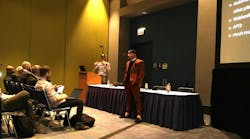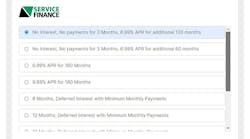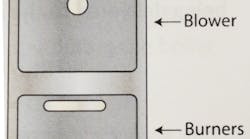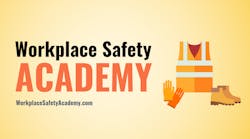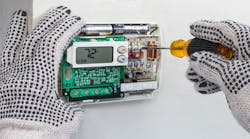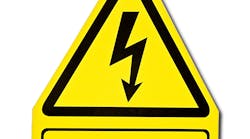In an ideal world, there would be a pool of experienced technicians to choose from. Unfortunately, as everyone in the industry knows, the pool has dwindled steadily for the past 40 years (since 1980)—and it continues to decline. Recently, Black and Decker created an index revealing that while 85% of young people think that skilled trades work is a good quality career option in general, less than half (49%) of youth have ever considered a skilled trades career. In fact, even if every existing skilled worker in America was employed today, 35% of job openings in the durable goods manufacturing sector would remain unfilled.
To combat these challenges, many companies create connections with transition programs, trade schools or vocational high schools, post on multiple job boards, and even offer referral programs. However, in doing this they are tapping the same channels that are seeing fewer people interested in the skilled trades.
But what if you looked for aptitude rather than just experience?
Hidden Workers
Thinking of sourcing more like advertising, technology can be used to source and attract talent from untapped candidate pools like immigrants, veterans, and gig economy workers, all referred to as “hidden workers” by researchers at Harvard Business School’s Managing the Future of Work Project. More than 27 million of these people exist, united by a common desire to “unstick” their lives by moving from warehouse, retail, or other “unskilled” jobs into more stable careers with upward mobility.
There are several types of screening technology, two of which have the potential to significantly help skilled services companies find the right candidates.
The first kind of screening technology is an online based skills assessment. In addition to looking at a candidate's experience, which may or may not have direct experience in the skilled trades, skills assessments can be used to identify a range of applicable knowledge and skills. For example, you can use these assessments to understand someone’s math, reasoning, and safety procedure knowledge, as well as their resilience, dependability and coachability. All before they interview with you.
The second kind of screening technology focuses on video resumes. Videos are much richer forms of communication, helping hiring teams find the right candidate based on culture. Interviews—phone screens, first, second and final interviews—require a large amount of time and attention from your team. By using recorded video before the interview process, your team can get a feeling for who someone is before deciding to interview them. Essentially, you streamline your interviewing process by “meeting someone before you meet them.”
Our approach at UpSmith is to develop systems that help companies reward value-creating behaviors from their teams, helping them grow revenue, improve output, and lower costs. Our technology products also help retain talent in a performance culture through improving morale by celebrating performance and providing coaching to drive accountability and achievement.
The Boost Approach
Skilled workers—especially today’s skilled workers—want acknowledgement “in the moment,” so many of the mechanisms in our tool, Boost, are text-based. Text happens instantly. So does motivation.
And workers, no matter what work they do, want rewards that go beyond the paycheck. Boost, for example, helps employers recognize high performers by awarding them points redeemable for prizes. A points system can also help foster the kind of positive, healthy competition that helps drive teams to success.
So, celebrating the correct behaviors—like upselling a customer on a new piece of equipment, or simply getting a customer to write a positive review—then rewarding those behaviors in measurable, tangible ways. But the final piece of the puzzle it to be both fair and consistent when celebrating and rewarding. Nothing will sour an employee faster than to see the work they do ignored when the same work from someone else is praised.
The Boost system (through the UpSmith team) handles prize fulfillment automatically so that managers can focus on business, not logistics.
That focus means tracking the data, making sure that as behaviors improve so does revenue. By integrating Boost with an enterprise resource planning (ERP) system, such as ServiceTitan, users can quickly and consistently measure employee performance and progress towards their goals. The result? Happier, more engaged employees and a culture of performance that drives retention and continuous improvement.
There are going to be business owners who look at this approach and see it as somehow “coddling” or “pampering” employees. Business owners who feel that a fair paycheck should be all the reward an employee needs. On the contrary, praise and reward are the basic tools for building and motivating a high-performing team, and used correctly, intelligently, can lead to better business outcomes.
Ask yourself, if you were starting out today in the skilled trades, what kind of company would you want to work for?
Wyatt Smith is the Founder & CEO of UpSmith, a technology venture on a mission to solve America’s skilled labor crisis. Visit UpSmith.com/contact-us to schedule a demo of Boost and learn how our technology can help you recruit, reward, and retain skilled workers – all while boosting your bottom line.
